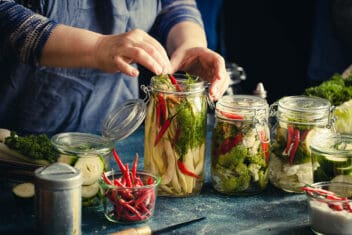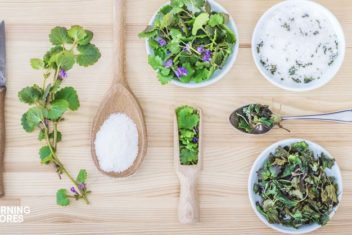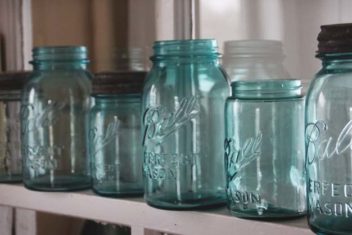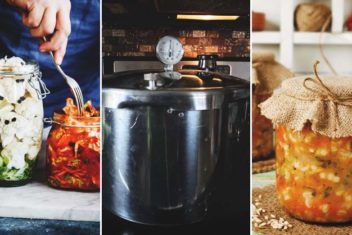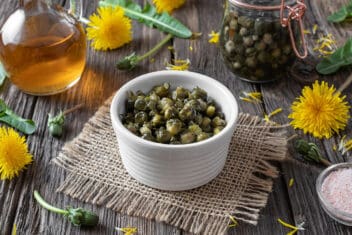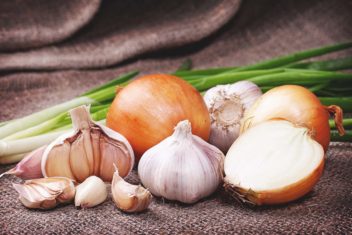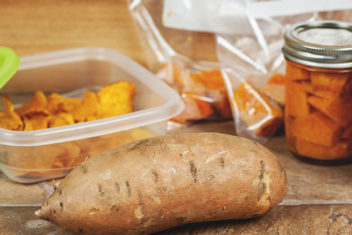Are you a huge fan of fermented foods? Or are you simply looking for new ways to preserve your vegetable harvest?
Either way, sauerkraut is a healthy, fun option that’s as easy to make as it is delicious on hot dogs or packed into pierogis. In this article, we will teach you how to make your own with a few basic ingredients and supplies you already have at home.
Gather your cabbages, and let’s dig in.
What is Sauerkraut?
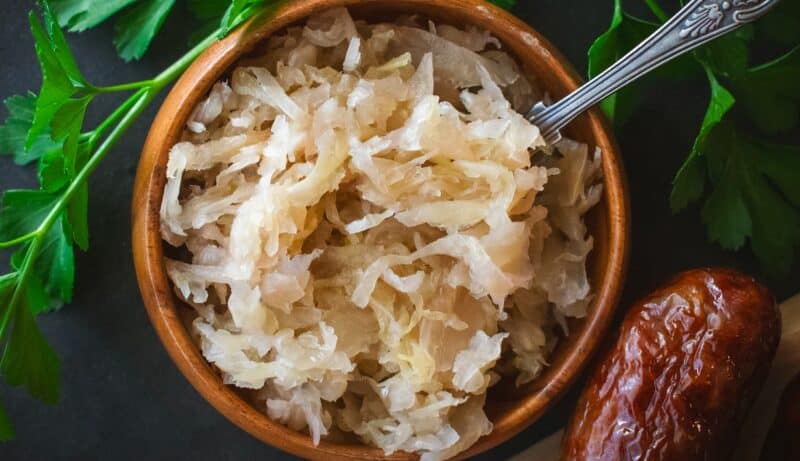
The literal translation from German is “sour cabbage”, relating to the tangy-sour flavor that sauerkraut develops when it’s fermented.
This method of preparing and preserving cabbage is believed to have originated in China a few thousand years ago, and the technique was spread throughout Europe, Asia, and the Middle East via the Silk Road.
It became particularly prevalent during the Roman Empire, and became especially popular in colder European regions.
Nutrients were scarce during the long, cold winter months, in which people mostly subsisted on grains, roots (which could be stored long-term), and dried or salted meat and fish.
As a result, scurvy and other health issues related to malnutrition caused severe health issues. Since sauerkraut is fermented, it can be stored long-term and is thus an excellent source of nutrients (including vitamins C and K2) when fresh foods are scarce.
If you don’t want scurvy, eat your kraut.
To make sauerkraut, the only basic ingredients you need are cabbage, salt, and water (the last of which is only necessary if your cabbage is a bit dry). You can add a variety of flavoring agents if you’d like to, but a basic kraut is just salted.
As the sauerkraut ferments, it creates bacteria that your body just happens to love. In fact, the probiotics present in sauerkraut increase beneficial gut flora, improving your overall health and boosting your immune system.
In one study in Appl Environ Microbiol, scientists Z. Lu, F. Breidt, V. Plengvidhya, and H. P. Fleming from the USDA found that dozens of beneficial bacteria in the Leuconostoc, Weissella, and Lactobacillus genera appear in fermenting cabbage.
These microbial communities persist even after the cabbage is fermented and bottled,.
So, their beneficial characteristics last even when we eat them, as a study in Foods by Michelle A. Zabat, William H. Sano, Jenna I. Wurster, Damien J. Cabral, and Peter Belenky at the Department of Molecular Microbiology and Immunology at Brown University, Providence, Rhode Island, found.
A study in Front Microbiol echoed this finding. Miin Chan, Di Liu, Yingying Wu, Fan Yang, and Kate Howell at the School of Agriculture and Food, The University of Melbourne, Australia, found that storage, processing, and spices didn’t reduce the number of lactic acid bacteria in the sauerkraut.
Additionally, sauerkraut contains enzymes that assist with digestion by helping the gut to absorb various nutrients. This is particularly beneficial to those who have problems with absorption due to IBS, Crohn’s, Celiac disease, and leaky gut syndrome.
Sauerkraut is really good for us, as Giulia Gaudioso, Tobias Weil, Giulia Marzorati, Pavel Solovyev, Luana Bontempo, Elena Franciosi, Luigi Bertoldi, Carlo Pedrolli, Kieran Michael Tuohy, and Francesca Fava at University of Leeds, University of Trento, and Fondazione Edmund Mach reported in a study in Front Microbiol.
This is thanks to the lactic and acetic acids, as well as amino acids, amines, and uracil in sauerkraut.
They showed that sauerkraut reduces inflammation in the body.
What You’ll Need to Make Your Own:
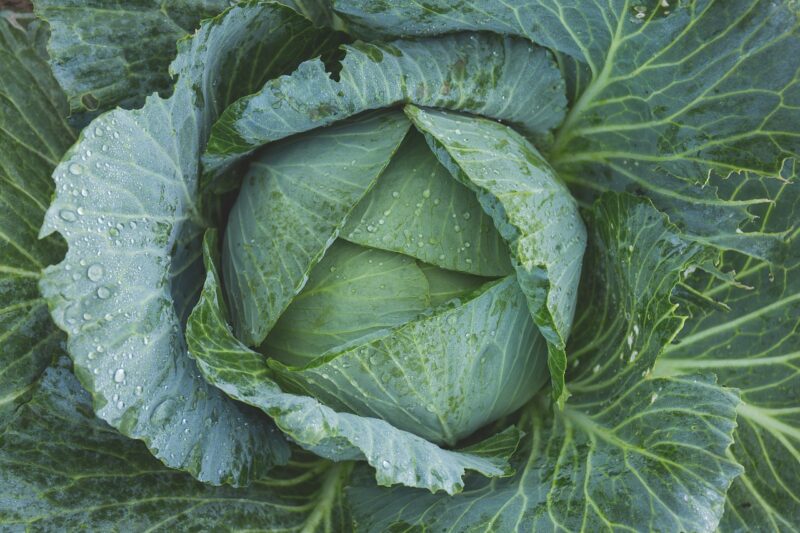
- One medium-large green cabbage head (approximately 3-4lbs)
- 1 1/2 tablespoons Kosher salt
- Additional seasonings (optional)
- Two clean, sterilized canning jars
- Two clean, sterilized jelly jars that fit inside the canning jars easily
- Marbles or pie weights
- Cheesecloth
- Twine or rubber bands
Instructions
While it’s easy to make sauerkraut, there are several specific instructions to follow to make it safely. If you don’t follow these to the letter, you may end up with slimy, decomposing slop instead of squeaky, well-fermented, and tasty sauerkraut.
1. Wash and Sterilize Everything
Clean the entire area thoroughly, including your cutting board, knives, bowls, etc. Make the area as clean as if you were going to conduct surgery there. Any contaminants can throw off the fermentation process and introduce less-than-wonderful bacteria into your sauerkraut.
Be sure to wash your cabbage to remove any residue that may still be clinging to it.
2. Prepare Your Cabbage
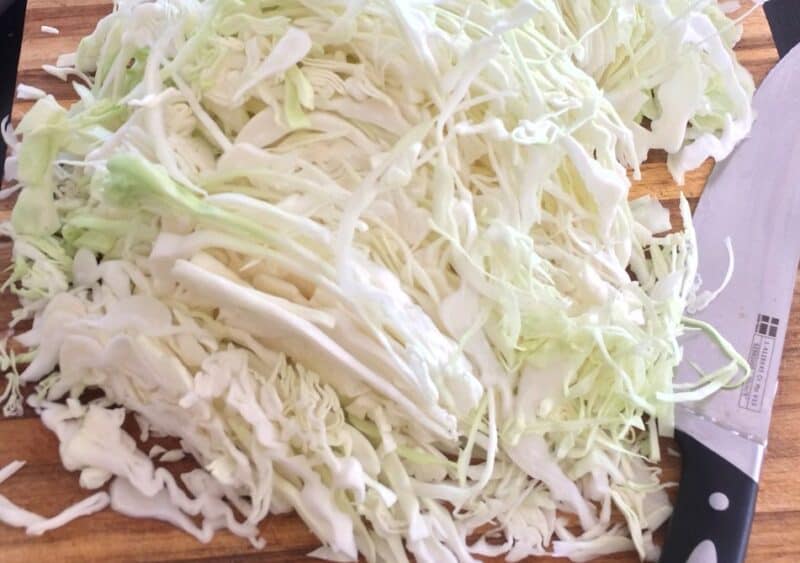
Peel off the outermost leaves and add them to your compost heap. Then peel off one more leaf and reserve it for later.
Take the core out of your cabbage and set that aside for later. You can feed this to your livestock or do something creative with it in the kitchen. You can pickle, fry, sautee, roast, or braise them.
Next, use a sharp chef’s knife to quarter the cabbage, then shred each quarter into thin ribbons. Transfer the shredded cabbage into a large bowl in preparation for the next step.
3. Make it Salty
Sprinkle the salt all over your shredded cabbage and let it rest for 15–20 minutes. It’ll start to release some of its liquid, and at this point, it’s time to give it a good massage.
Use your hands to knead and massage the salt into the cabbage, ensuring that you squeeze and squish it thoroughly as you do so.
This is the point where you can add additional seasonings if you’d like to. Caraway seeds are commonly added in Eastern Europe, while mustard and/or dill seeds are more in Germany and Scandinavia.
I add about one teaspoon of mustard seeds to mine, along with a bit of freshly cracked pepper.
4. Get Packing
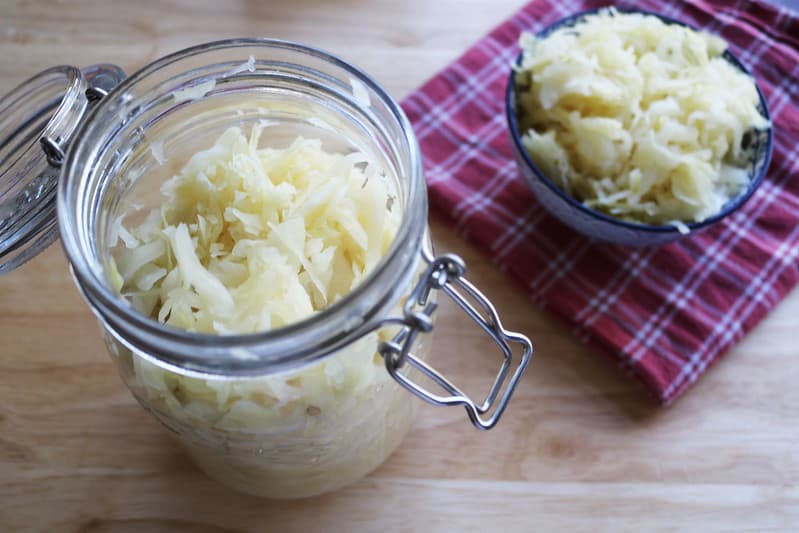
Transfer the shredded cabbage into your clean glass canning jars, dividing the amount equally between them. Be sure to pack this in firmly. You can use the back of a wooden spatula or similar to really cram it in.
Once it’s all in there, cut a couple of circles out of the reserved cabbage leaf and use it as a covering inside each jar, laying it over the packed cabbage.
Then, pour the liquid released from the kraut massage into each jar. It’s incredibly important that this brine covers all the cabbage.
Otherwise, instead of fermenting, the sauerkraut will rot. If there isn’t enough liquid to cover this, mix one teaspoon of salt in one cup of water and pour it in. Repeat this process as needed until everything is submerged.
5. Weigh it Down and Cover it Up
Remember those jelly jars you sterilized? These are now your sauerkraut presses.
Pour several marbles or pie weights into each jar and place them inside the canning jars. Press them down slightly and allow them to settle in. These will keep the cabbage submerged inside the brine so the fermentation magic can happen.
Next, cover the jars with a couple of layers of cheesecloth and secure those in place around the jars’ necks with twine or rubber bands. These will allow gases to escape during the fermentation process so the jars don’t explode and cover your kitchen in kraut stucco.
6. Let it Ferment
At this point, you need to simply let nature take its course.
Place the containers on a countertop where they won’t get direct sunlight, or even in a cupboard. Ideally, you’ll keep them in a place with a moderate room temperature (around 70°F) so they can ferment without heat accelerating the breakdown process.
The fermentation can take anywhere from three to 14 days, depending on room temperature and other external factors.
7. Taste It
Yes, this is the difficult part; we’re so sorry, oh no, the delicious torment.
After three days, you’ll need to taste the kraut to see how it’s going. Some people like their sauerkraut very sour and briny, while others prefer theirs with a milder flavor.
As such, you’ll need to taste it daily until it reaches the optimal level of deliciousness that you’re aiming for. Once it’s perfect for your preferences, you can remove the cheesecloth and prep it for storage.
8. Store Your Sauerkraut
If there’s any scum on top of the kraut brine, skim it off and discard it. Should any mold appear, throw away the top half inch of the kraut immediately and check to see if the rest has been contaminated.
If it’s firm and looks good to your eye, it should be fine. That said, if there’s any risk that the mold has seeped in more deeply, discard the contents. It’s always better to err on the side of caution when it comes to preserving food.
Use clean, sterilized lids and bands to close up the jars, and move them into your refrigerator. It’ll keep in there for several months (usually six to eight) before it’ll go bad. If you’re using a cold cellar, check it after two months to see if it’s gone off or not.
Taste a small amount every time you remove the jars to see if the kraut still tastes and smells okay. As long as it isn’t slimy or foul-smelling, it’s still fine.
If you make a large batch, you can also freeze it. When I make mine, I freeze about half of it in zipper bags. The texture will be a bit different when you thaw it out, but it’s still great for pierogis, stuffed cabbage rolls, casseroles, etc.
Additionally, you could also can your sauerkraut for long-term storage. Simply add enough vinegar to create a 2″ headspace in your jars, seal with airtight rings and lids, and process in a boiling water bath for 25-30 minutes.
Once removed, let the jars cool until they pop sealed, then store them in a cool, dark cupboard or pantry for up to three years.
References:
- Lu Z, Breidt F, Plengvidhya V, Fleming HP. Bacteriophage ecology in commercial sauerkraut fermentations. Appl Environ Microbiol. 2003 Jun;69(6):3192-202. doi: 10.1128/AEM.69.6.3192-3202.2003. PMID: 12788716; PMCID: PMC161505.
- Zabat MA, Sano WH, Wurster JI, Cabral DJ, Belenky P. Microbial Community Analysis of Sauerkraut Fermentation Reveals a Stable and Rapidly Established Community. Foods. 2018 May 12;7(5):77. doi: 10.3390/foods7050077. PMID: 29757214; PMCID: PMC5977097.
- Chan M, Liu D, Wu Y, Yang F, Howell K. Microorganisms in Whole Botanical Fermented Foods Survive Processing and Simulated Digestion to Affect Gut Microbiota Composition. Front Microbiol. 2021 Dec 7;12:759708. doi: 10.3389/fmicb.2021.759708. PMID: 35035384; PMCID: PMC8757042.
- Gaudioso G, Weil T, Marzorati G, Solovyev P, Bontempo L, Franciosi E, Bertoldi L, Pedrolli C, Tuohy KM, Fava F. Microbial and metabolic characterization of organic artisanal sauerkraut fermentation and study of gut health-promoting properties of sauerkraut brine. Front Microbiol. 2022 Oct 13;13:929738. doi: 10.3389/fmicb.2022.929738. PMID: 36312966; PMCID: PMC9606823.


